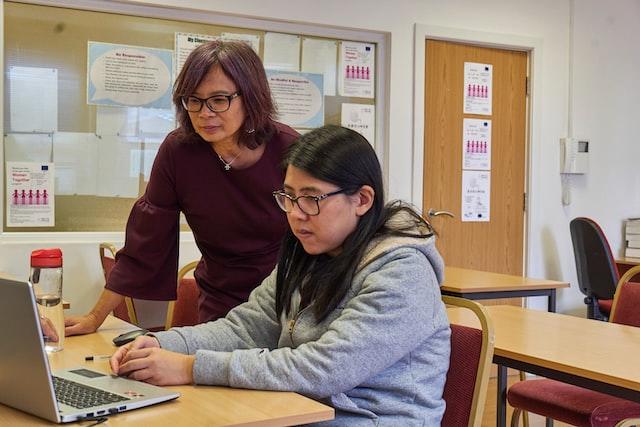We know exactly what you're contemplating.
Is TOPIK II really worth my time and energy now that I have already passed my TOPIK I?
You've probably heard many people say this.
If you think TOPIK I was a breeze, TOPIK II could well be a tornado.
Well, we say it may be a mild one if you have mastered the right way to prepare for the test.
Many Korean language learners may choose to stop at TOPIK I because there are more levels associated with TOPIK II and the difficulty level of the tested components are significantly higher. That being said, we assure you that it is an extremely rewarding and enriching experience to conquer TOPIK II in your language learning journey regardless of your motivation to learn Korean.
In this article, we will be reviewing five practical tips to score well for your TOPIK II paper.

Tip 1: Start preparing for the writing component and familiarize yourself with the format for TOPIK II
Apart from the listening and reading component, you will be tested on an additional component which is the writing component.
You can refer to the table below for the overall structure of TOPIK II.
| Tested Components | Question Types | Number of Questions | Points |
|---|---|---|---|
| Listening | Multiple choice questions | 50 | 100 |
| Writing | Short answer questions and essays | 4 ( 2 short questions, 2 essays) | 100 |
| Reading | Multiple choice questions | 50 | 100 |
Do take note the listening and writing tests will be conducted first in the same session whereas the reading component will be conducted in the second session. There's also a slight difference in the test duration for TOPIK II.
- The test duration for the listening component is 60 minutes.
- The test duration for the writing component is 50 minutes.
- The test duration for the reading component is 70 minutes.
For now, let's look at how the writing component for your TOPIK II is evaluated.
When it comes to the two short answer questions, you will be graded under these criteria:
- Content and task execution
Marks will be given according to the suitability of content for the presented task.
- Use of language
Marks will be awarded when the correct vocabulary, and grammar are used for the final answers.
On the other hand, candidates will be graded according to these guidelines when it comes to the longer essay questions:
- Content and task execution
Examiners will look at the diversity of your points and the richness of your essay construction.
- Development structure
Examiners will look at the clarity, and logic of your overall paragraphs (introduction, body and ending) and the portrayal of the key idea. It is also important to structure your essay in alignment with the given topic. Another thing that examiners will take into account is the application of the right discourse markers throughout the essay as you develop the argument.
- Use of language
Examiners will evaluate the candidate's inclusion of the right vocabulary and grammar structure throughout the essay. This includes the right spelling, syllable spacing as well as the correct level of formality according to the context of the texts in the paragraphs.
Don't forget to read this article to develop a better understanding of the TOPIK papers.
Tip 2: Expand your vocabulary and comprehension by diversifying your reading materials
You've read earlier about the new format of question structures for the reading component. 50 multiple-choice questions as compared to 40 multiple-choice questions in TOPIK I.
The most commonly asked question types are also more comprehensive and detailed which requires candidates to master vocabularies that are more advanced and correctly understand more complex grammar sentence structures in the given texts.
Here are some recurring questioning patterns that you can find in your TOPIK II reading component.
- Question type 1: Select the most accurate vocabulary and grammar for the blank.
- Question type 2: Identify the meaning of the core vocabulary of a given text (notices, advertisements, product explanations, campaigns etc)
- Question type 3: Choose the right answer option that fits the context of the given diagram or poster.
- Question type 4: Read an article from a newspaper or explanatory writing and then choose the correct answer option that fits the context of the text.
- Question type 5: Arrange the given sentences in the right order.
- Question type 6: Grasp the entire content of the whole paragraph and choose the right vocabulary, idiomatic expressions or clauses that fit in the blank.
- Question type 7: Identify the expressed emotions that are indicated by the underlined portion.
- Question type 8: Select the right answer that best fits the title of the given newspaper article.

Photo by sofia kang on Unsplash
From the above question types, you can see that you will come across different reading texts. Hence, it's best to read up on news, advertisements, novels, and Korean idiom expressions so that you are well-versed in various topics that revolve around different themes.
Another effective tip is to get a Korean-English dictionary so that you can access the most frequently used Korean words in daily living and other contexts. You will be guided on the meaning, grammar structures and the correct usage of the words through various example sentences too!
Discover a way to build a strong foundation in your TOPIK I before proceeding to TOPIK II.

Tip 3: Familiarize yourself with various conversational styles, tenses and conversation contexts to enhance your listening skills
When it comes to listening, the format for TOPIK II is similar to TOPIK I. But it requires candidates to pick up the key actions, key themes, and right orders of the conversation's context which revolves around higher-level vocabulary that is unlike TOPIK I.
To take your Korean listening skill to the next level, we highly recommend you to listen to Korean language podcasts that are catered to intermediate and advanced Korean learners.
You may refer to the below list and start plugging in when you are commuting or on the road.
- IYAGI - Natural Korean Conversations For Learners by Talk To Me In Korean
- Core Grammar Lessons Only by Talk To Me In Korean
- Essential Korean Podcast
- Learn Korean and Korean Culture
Don't forget to master the overall format and exam scope of the TOPIK papers.
Tip 4: Always look out for consistent feedback and evaluation of your Korean learning level from your Korean tutor
Even though you may have had the experience of sitting for your TOPIK I earlier, TOPIK II is a different ball game altogether.
You need to work together with your Korean tutor to be equally equipped for all three components that are tested, especially for your writing component.
That's because this component consists of only subjective questions and it is graded 100% by examiners using a specific marking scheme.
Having a Korean tutor will enable you to be more confident in your writing component because you will receive personalised and direct guidance on how to improve your writing.
You'll know for sure how to pace your paragraphs and points accordingly to the given topic and use the correct vocabulary, phrases, punctuation, sentence structures and spelling when you have a Korean tutor who regularly marks your essays.
Keep all your notes and list down the feedback of your tutors so that you can improve your writing consistently.

Photo by Centre for Ageing Better on Unsplash
One way to look for an experienced Korean tutor near you is to head to Superprof Malaysia and start browsing the profiles of the tutors.
Through their tutoring profiles, you can learn more about their teaching background, teaching methodology, years of learning and teaching Korean, hourly rate, availability of online lessons as well as reviews from their former students.
Once you have made up your mind, you can then proceed to contact the Superprof tutor via their profile and continue to communicate with him or her about your future lessons' arrangements (duration, schedule, payment methods etc).
Learning has never been so easy!
Explore the grading scheme of the TOPIK papers here.
Tip 5: Broaden your learning resources and Korean studying techniques
Knowing that under TOPIK II, candidates will be evaluated according to four grades according to intermediate to advanced level (Level 3, Level 4, Level 5, Level 6), you certainly need to up your studying and revision game this round.
At this stage, you have to correctly memorize and apply as much vocabulary as possible so that you can do well in the listening, reading and writing components.
Our suggested additional learning resources include:
- Bilingual dictionary
- Grammar textbooks and workbooks
- News articles in Korean (Physical/Online)
- Books on Korean idioms and expressions
- Phrases that are commonly used during travelling
- Korean cultures and Korean verbs that are used in daily routine
- Podcast and radio stations
- Korean storybooks and novels

Photo by Firmbee.com on Unsplash
There must be a more active stance when it comes to consuming Korean content too! Instead of skimming through the texts, maybe you should write down example sentences from dictionaries or news articles so that you can take note of the particles, tenses and spacing of a correct Korean sentence structure.
This will help you greatly to remember them better and to respond to the Korean texts faster (through both of the listening/reading components) in your actual TOPIK II later. The more engaging and interactive your studying technique is, the more you will be to apply it successfully. Do not limit yourself!
Well, we hope that you'll benefit from the five tips that were mentioned above. Many people have passed TOPIK with flying colours and you could be next too! All the best!















